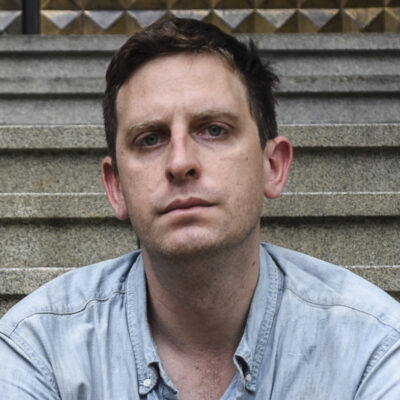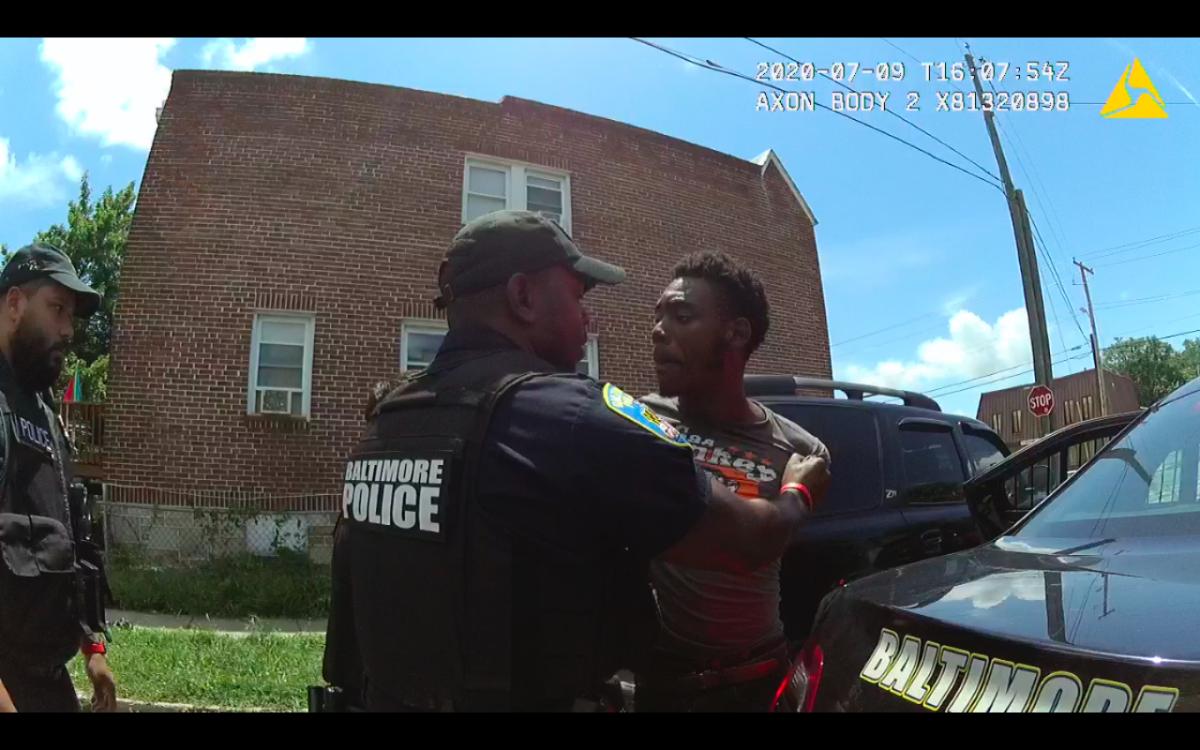
Editor’s Note: This story was produced in partnership with the Garrison Project, an independent, nonpartisan organization addressing the crisis of mass incarceration and policing. Explore more of the project’s coverage, here.
When Tyrie Washington saw Baltimore City Police roll past him a little after noon on a Thursday in July of 2020, he ran. He darted through an alley in West Baltimore—he knew the neighborhood well because he’d lived there for years—and then hopped a fence and hid.
From the passenger seat of an unmarked police car, Detective Alex Rodriguez spotted the 21-year-old Washington, crouched by a bush in the yard of a residence.
Moments earlier, Detective Drake Winkey of the Baltimore Police Department’s Northwest District Action Team (DAT) announced over the radio that someone was “running through the alley.”
Rodriguez got out of the car shouting, “Stop.” Washington jumped a fence, but fell to the ground. Rodriguez grabbed him.
“Stop bro, stop,” Rodriguez said. “Why you running?”
Out of breath, Washington articulated what he believed were his rights. “All right, I got my ID,” he told Rodriguez. “You’re not gonna search me.”
Washington was referring to his Fourth Amendment right against unreasonable searches and seizures. He believed that would prevent any search of his person and that all Rodriguez could lawfully do was ask for his ID.
Then Detective Israel Lopez—who pulled up with Det. Winkey moments earlier—announced “gun,” reached into Washington’s pants and removed a handgun.
“Y’all bitches don’t got nothing else to do?” Washington asked the three cops surrounding him. “[Than] lockin’ up people with guns on the streets?”
DAT Detective Darwin Noesi said. “Yeah.”
“Exactly,” Rodriguez chimed in. “People like you.”
The officers who arrested Washington were part of a District Action Team, a group of specialized units within the Baltimore Police Department, currently with 75 members in total. DAT officers do not answer calls or investigate homicides, but instead engage in proactive policing in neighborhoods they deem “high crime” areas. They look for people they perceive as suspicious and keep an eye out for crimes happening—or about to happen.
Each of the department’s nine districts has at least one DAT unit. The officers operate in marked and unmarked police vehicles; their uniform is tactical vests and other “plainclothes” gear. While DAT officers engage in tasks like foot patrols, traffic stops, and executing warrants, their primary focus is violence reduction through gun and drug enforcement.
District Action Team enforcement often looks like Washington’s arrest in 2020. Defense attorneys argue, however, that DAT officers circumvent Fourth Amendment protections and manufacture probable cause through a vast set of vague descriptors: “bulges” in clothing or backpacks, “furtive gestures,” nervousness including a “visible carotid artery,” clothing out of season, and running from police.
DAT was established in the summer of 2017, just months after the police disbanded the federally indicted gun- and drug-seizing unit Gun Trace Task Force (GTTF), whose members stole cash and drugs, dealt drugs, and planted evidence. Then-Police Commissioner Kevin Davis announced the new DAT squads would be a different kind of proactive policing than the plainclothes cops jumping out of unmarked cars to harass and arrest: “The ‘jump-out boys’ culture was just counterproductive to everything we have to do in the crime fight,” Davis said then.
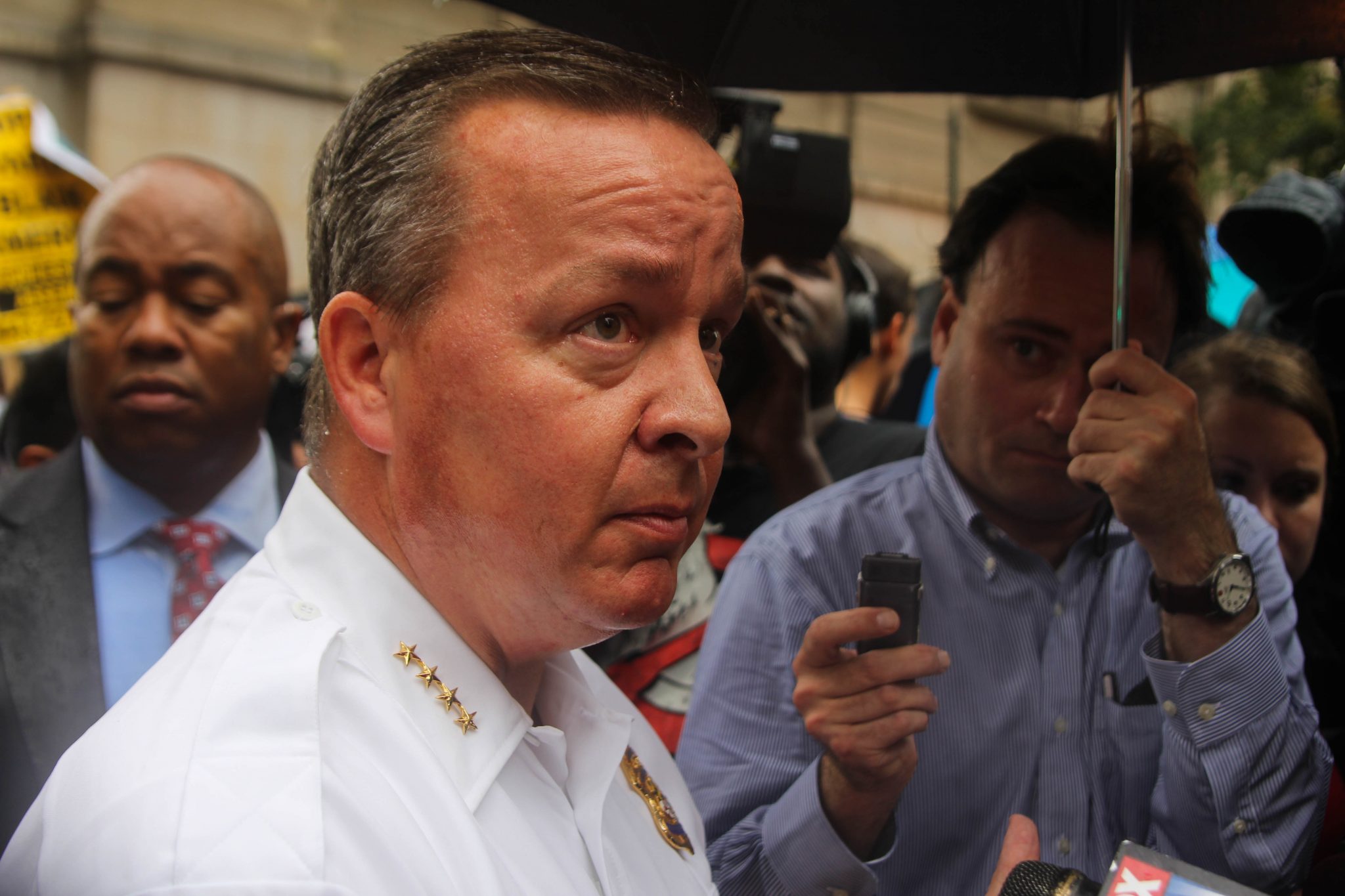
But in the 2020 final report from the Commission To Restore Trust In Policing—created in the GTTF’s aftermath—an officer noted little difference between DAT and specialized units disbanded post-GTTF: “Within a few months [of the GTTF indictment], however, the Department reorganized again, reforming plainclothes enforcement units as District Action Team (‘DAT’) squads.”
Joseph Richardson, a professor of African-American Studies and anthropology at the University of Maryland College Park, agrees. “As we’ve seen across this country with the disbanding of these ‘anti-crime units,’ as soon as they get negative press . . .they’re often rebranded, repackaged, and then sold back to the public under a different name and still engaging in the same egregious practices,” he said. “That’s part of the public narrative that they sell: ‘We got rid of that.’”
One of the issues that crosses over from GTTF to the DAT, says Deborah Katz Levi, director of Special Litigation for the Maryland Office of the Public Defender, is the disproportionate impact on low-income neighborhoods of color.
Direct Action Teams “take part in aggressive policing practices predominantly in Black and Brown communities,” Levi said. “It is our belief that they engage in a similar type of ‘proactive policing’ that landed our city into a consent decree for unconstitutional policing practices. What we know from the past is that these tactics help cement and perpetuate a culture of policing that destroys trust and harms our community.”

But DAT’s specialized units are a pillar of Baltimore Mayor Brandon Scott’s Group Violence Reduction Strategy (GVRS), a community-oriented approach to gun violence launched in late 2021. The strategy pairs arrests of violent offenders with outreach in the form of social services and counseling. GVRS is what some call a “carrot and stick” approach to violence reduction based on the popular program of focused deterrence: people identified as committing gun violence are offered assistance such as social services (carrot) or they are threatened with arrest and incarceration (stick).
GVRS services offered include counseling, life coaching, employment and housing assistance, and emergency relocation. In 2022, 71 people accepted GVRS services.
Critics of focused deterrence, like Philip McHarris, a postdoctoral research fellow in the Department of African American Studies and the Ida B. Wells Just Data Lab at Princeton University, say that the program is “framed as an alternative to mass incarceration because of its purportedly more precise approach to violence, but is instead part of the same criminal legal system that wreaks havoc on Black, Latinx, and other criminalized communities.”
The Gun Violence Reduction Strategy, which has significant support via $50 million in American Rescue Plan funding and philanthropy, is part of the city’s Comprehensive Violence Reduction Plan, in effect through 2026. The plan was launched because since 2015, Baltimore has seen more than 300 homicides per year—the overwhelming majority of which were gun-related.
“As soon as [these ‘anti-crime units’] get negative press . . .they’re often rebranded, repackaged, and then sold back to the public under a different name, but still engaging in the same egregious practices.”
While Scott’s goal to reduce murders and shootings by 15 percent each year starting in 2021 was not met, homicides and nonfatal shootings have declined in the Western District where GVRS was piloted in 2022.
Based on those one-year results, Scott announced the expansion of the Gun Violence Reduction Strategy to other districts. With that expansion comes more involvement from DAT squads, which are considered a GVRS “resource.”
In an email to The Garrison Project and Baltimore magazine, Baltimore Police Director of Public Affairs and Community Outreach Lindsey Eldridge said the purpose of the District Action Teams is to assist the BPD’s Gun Violence Unit (GVU) under its broader Group Violence Reduction Strategy. “This includes working alongside GVU on investigations, intelligence-gathering, and serving as a force multiplier following violent incidents,” Eldridge said. “While DAT and GVU work hand-in-hand, the DATs remain under the control of the District Commanders and will not be assumed into GVU.”
The members of DAT have another similarity with the members of the disbanded Gun Trace Task Force: DAT officers have frequently engaged in misconduct. The Baltimore Office of the Public Defender (OPD) has identified more than two dozen current or former DAT officers they consider having significant discipline histories or excessive force settlements.
“The data that OPD is analyzing and relying upon came from BPD itself, so either the agency is not checking their own data, or they simply don’t care,” Levi said. “It should not be the job of the Public Defender to hold watch over a police department, particularly a police department under a consent decree.”
Many current or former DAT members are on former State’s Attorney Marilyn Mosby’s 90-person “do not call” list. Officers on that list were not called to testify in court because past conduct makes them unreliable.
The Baltimore Office of the Public Defender has identified more than two dozen current or former DAT officers they consider having significant discipline histories or excessive force settlements.
DAT members also appear on Mosby’s broader list of 301 officers highlighting “integrity issues.” That list, however, did not exclude them from testifying.
While on DAT, three officers have been indicted by the State’s Attorney’s Office: Charles Baugher (for assault and misconduct), as well as former officers Michael O’Sullivan (for perjury) and Leon Riley (for two assaults).
DAT squads have been involved in at least two fatal police shootings (in 2018 and 2020) and a car crash that killed a 17–year-old in 2022.
Levi added that “unlike the GTTF, which was comprised of only a small number of officers, there are many more DAT team members throughout Baltimore engaging in what we suspect to be unconstitutional policing. That DAT team members have significant misconduct histories and civil settlements, should be a red flag for BPD.”
Levi cited the example of former DAT member Valentine Nagovich. Nagovich was a member of a proto-DAT “flex squad,” whose lockers were searched in 2005, revealing drugs “stashed” in their lockers. In 2010, Nagovich took part in a warrantless search a federal judge called “unacceptable.” In 2011, he hit a teen hard enough that the teen required surgery (the teen later received a $75,000 settlement). Nagovich is on the SAO “integrity issues” list.
Former DAT officer Luke Shelley’s Internal Affairs files were described by The Real News in 2022. The files detail complaints of biased policing, brutality, and an incident in which seized drugs were found in the trunk of his police vehicle. Shelley is on the “integrity issues” list.
Sergeant Jorge Omar Bernardez-Ruiz currently oversees the Northeast DAT. In 2013, Bernardez-Ruiz was one of the officers who beat, tased, and pepper-sprayed Tyrone West, who died in police custody. Weeks before West’s death, Bernardez-Ruiz beat Abdul Salaam during a traffic stop. The city later paid out $70,000 to Salaam and $1 million to the West family.
Bernardez-Ruiz is on the SAO “integrity issues” list.
James Craig, a current member of DAT, was one of many officers sued after the Baltimore Uprising for excessive force. On April 28, 2015, Craig chased Myreq Williams onto a bus because he believed Williams had a gun. In 2018, a jury ruled that Craig had used excessive force when he broke Williams’ arm and Williams was awarded $130,000.
Craig is also on the SAO “integrity issues list.”
According to an Internal Affairs file summary for Craig obtained by the Garrison Project and Baltimore magazine, there is a sustained allegation against Craig for choking a man in April 2018. The file also contains allegations from last year against Craig for improper search during a car stop and improper search and excessive force during another car stop.
The Northwest DAT officers who arrested Washington have also been involved in misconduct and excessive force complaints.
Detective Israel Lopez was one of four cops who fired more than 30 shots at Keith Davis Jr. in 2015, hitting him three times. Davis, who was arrested and charged with a handgun possession after the shooting, was later charged with a murder connected to that handgun. After being tried four times for murder, Davis was exonerated earlier this year.
On July 14, 2020, video of Northwest DAT’s Drake Winkey tackling a man outside of a shopping center was posted to the popular Baltimore Instagram account @BaltimoreMurderInk.
The irony is, the brand of proactive gun policing pursued by units like DAT has had little to no effect on crime reduction in Baltimore and other cities across the country.
According to an Internal Affairs Summary obtained in reporting this story, in August 2020, Winkey had an excessive force allegation lodged against him for shoving a man to the ground after the man stopped running. The allegation was sustained.
“Due to their role and enforcement function, we understand that our DATs are subject to a greater number of complaints in the execution of their duties,” Eldridge, the Baltimore Police Director of Public Affairs and Community Outreach, wrote in an email to the Garrison Project and Baltimore magazine regarding allegations of DAT misconduct. “When we notice problems, those issues are flagged to the Chief of Patrol’s Office and other Command Staff for proper course correction and disciplinary action.”
Of the officers mentioned in this article, two are no longer with BPD—Riley was fired and O’Sullivan resigned—and Baugher, while still on the force, currently has his police powers suspended.
Other officers mentioned are no longer in DAT, though they are still with Baltimore Police: Lopez, Nagovich, and Shelley are now on patrol; Noesi and Rodriguez are part of Criminal Investigations.
“Moving from one unit to another does not necessarily denote a disciplinary action of a BPD member,” Baltimore Police’s Eldridge wrote.
The Mayor and the Mayor’s Office of Neighborhood Safety and Engagement (MONSE) declined to comment about DAT’s involvement in GVRS for this story and directed all questions to Baltimore Police.
The irony is, the brand of proactive gun policing pursued by units like DAT has had little to no effect on crime reduction in Baltimore and other cities across the country, according to academic research and studies commissioned by major cities. In Philadelphia, for example, a 2022 report examining 2,000 shootings noted that increased gun arrests have not resulted in reducing or solving homicides or nonfatal shootings. “The current intense focus on illegal gun possession without a license is having no effect on the gun violence crisis,” the Philadelphia District Attorney’s Office wrote in the report.
For District Action Team units, making gun arrests means not only pushing the boundaries of probable cause, but allegedly manufacturing it on occasion. The Garrison Project and Baltimore magazine viewed a 2022 video of a DAT officer telling a man he arrested that the man could “get paid” $500 if he pointed DAT toward a person with a gun. The officer explained that the man can text DAT the location of a person with a gun and they’ll arrive to make an arrest and leave the informant out of it altogether. “Say, ‘this the dude,’” the DAT member tells the man. “We establish our own probable cause.”
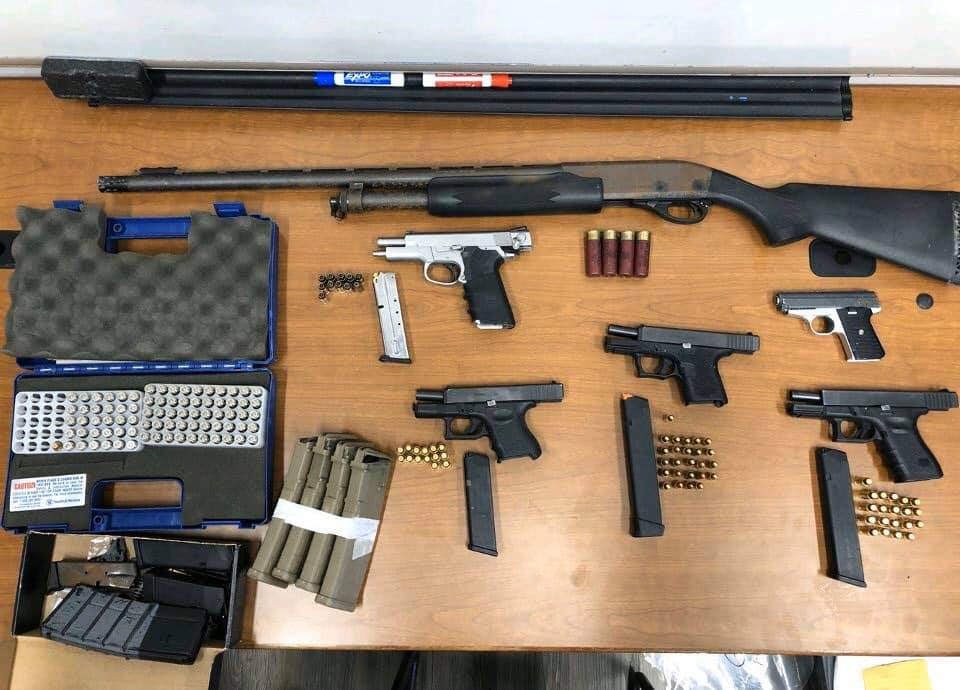
While gun seizures and weapons arrests by the Baltimore Police have remained steady, the homicide clearance rate (the number of murders police solve by arrest or exceptional means) has continued to plummet. According to the FBI, the national average is around 50 percent. In 2022, BPD’s homicide clearance rate was 36.3 percent, and its nonfatal shooting clearance rate was 23.3 percent.
Between 2021 and April 2023, the Northwest District, where Washington was arrested, has only cleared 11 percent of its homicides and 15 percent of its non-fatal shootings, according to data obtained by the newsletter Protect and Serve.
This year, the Maryland State Legislature passed bills that further restricted where someone can carry a gun, raised the gun possession age to 21, and increased the maximum penalty for adults convicted of “illegal” gun possession from three years to five years. The increased maximum penalty—House Bill 0481/Senate Bill 0889—was supported by current Baltimore City State’s Attorney Ivan Bates.
Richardson, the University of Maryland professor, said that increased penalties for gun possession are part of the growing shift away from the disastrous “war on drugs” to an equally ineffective “war on guns.”
“This war on guns is very similar to the war on drugs—and the draconian approaches to it,” he said. “It’s beginning to feel like the gun has now replaced crack.”
Richardson characterized the Maryland bills as “a page out of the war on drugs,” adding, “[they’re] creating and pushing for legislation, as if incarceration was the sole alternative and panacea to the gun problem. We know we’re not going to incarcerate our way out of it.”
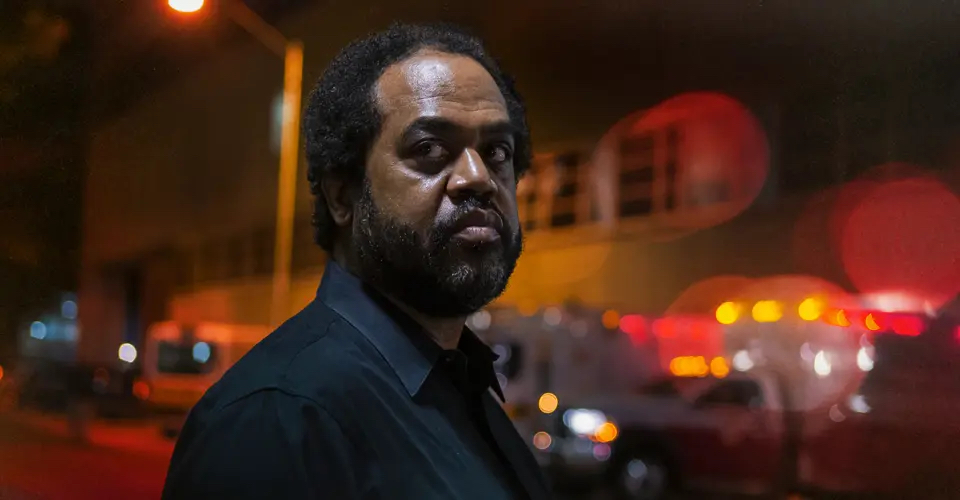
As gun laws in other states become less strict, licensing differs state-by-state, more guns are trafficked, and the production of guns has vastly increased. According to a recent analysis by The Trace, gunmakers produced 11 million guns in 2020.
Public defenders and academics are calling for more sophisticated approaches to gun policing than going after those with unlicensed firearms. For example, “proper cause” requirements for obtaining a gun license—often favored by gun control advocates—can disproportionately criminalize and incarcerate Black and Brown citizens.
In 2021, New York public defenders opposed the state’s proposed “proper cause” requirement for obtaining a gun license arguing it was unconstitutional and harmful to their clients. They also noted that in 2020 that Black people made up 18 percent of New York’s population, but accounted for 78 percent of the state’s felony gun possession cases.
That case—New York State Rifle & Pistol Association, Inc. v. Bruen—was heard by the U.S. Supreme Court in 2021. In June 2022, the justices ruled that the requirement was unconstitutional.
“As public defenders, we represent too many people of color who face years in prison not for shooting, but for simply possessing an unlicensed gun—something that is legal in close to half of the country. New Yorkers prosecuted for simple gun possession are branded ‘criminals’ and ‘violent felons’ for life,” the Bronx Defenders, Brooklyn Public Defenders, and others wrote in response to the Supreme Court’s Bruen ruling.
“This war on guns is very similar to the war on drugs—and the draconian approaches to it. It’s beginning to feel like the gun has now replaced crack.”
Richardson argued that an effective violence reduction strategy is community violence intervention. Unlike policing or even GVRS—which combines community work with carceral approaches including large-scale indictments and DAT teams—violence interruption programs such as Safe Streets have been shown to be effective. In late March, a study by the Center for Gun Violence Solutions at the Johns Hopkins Bloomberg School of Public Health showed that Safe Streets has had a sustained, long-term impact on violence reduction in places where it has operated the longest.
“I don’t think policing has worked up until now, so why not invest in another alternative, which seems to be working if we put the right resources into it?” Richardson said.
More than a year after Washington’s 2020 arrest by DAT, he pleaded guilty to handgun possession and having a loaded handgun. “It was to really get the situation over with because I have a child,” Washington said. “It’s like, even if it’s a feeling in my heart that I know they broke the Fourth Amendment [against illegal search and seizure], it’s just a feeling knowing that all the odds are against you. It’s like peer pressure.”
His guilty plea was conditional, meaning that he reserved the right to appeal one aspect of his case: the gun seizure. Washington’s attorney argued that the charges should have been dropped because the seizure violated the Fourth Amendment. There was no probable cause for stopping and searching Washington—he was only stopped because he ran from the police.
A judge denied that motion in 2021. In 2022, his case was appealed to Maryland’s Supreme Court. In the meantime, Washington began his prison sentence: 10 years with five suspended and upon release, two years supervised probation and registration on the Gun Offender Registry for five years.
“I’m not one of those guys that’s getting locked up for doing armed carjacking and armed robberies and stuff, it’s more just protecting my freedom,” Washington said from the Maryland Correctional Training Facility in Hagerstown. “I look at it like if I had my gun permit, I wouldn’t have the charges. If I had a gun license, I would just be trying to protect my life. That’s it—especially in a city like Baltimore.”
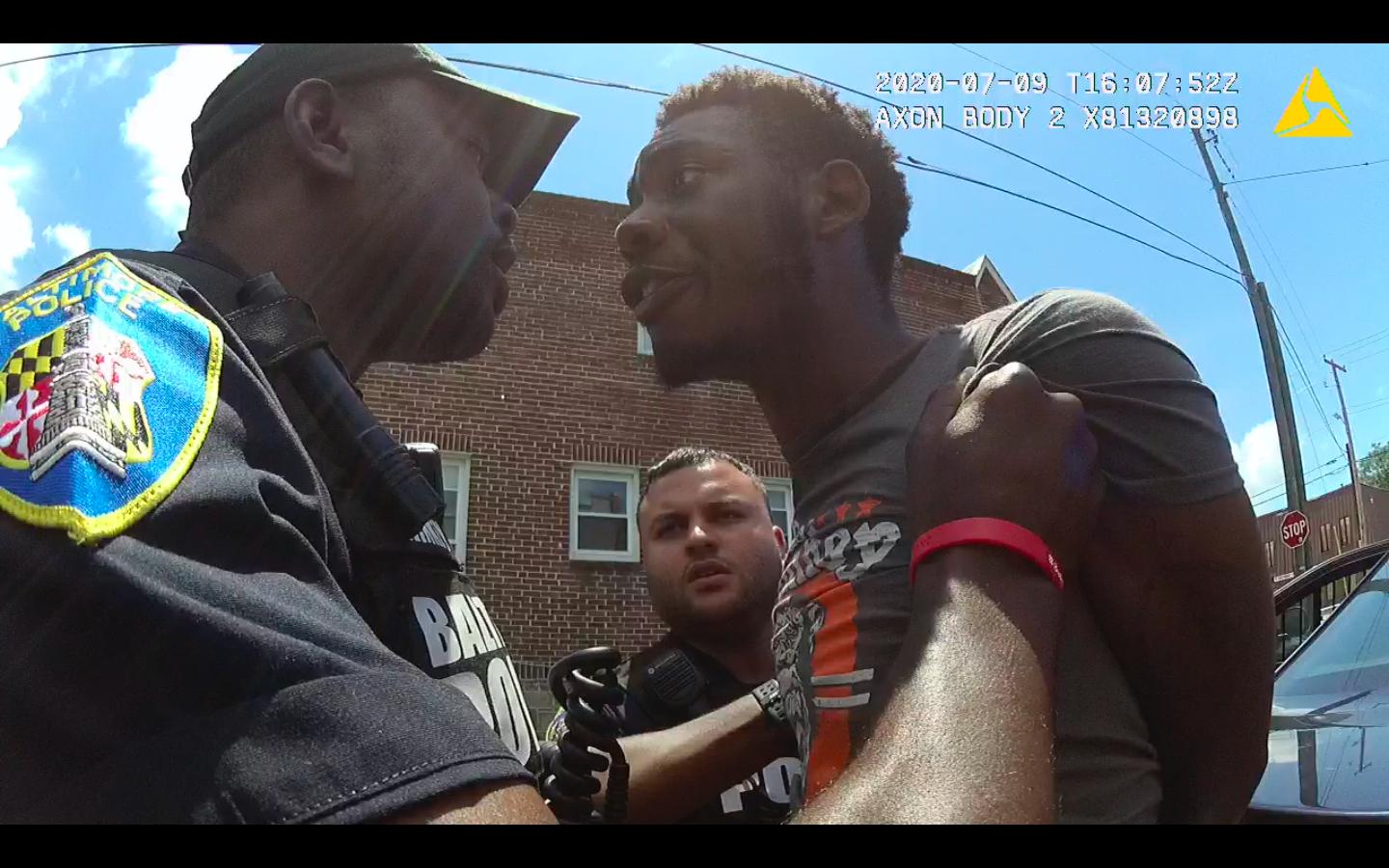
Washington’s prior weapons-related arrests are all for gun possession.
Washington was 17 when he was caught with a gun for the first time. In 2015, he was arrested when a plainclothes squad kicked in the door to serve a warrant. There were guns in the house as well as cannabis and packing materials for drug sales. Washington and four others—three of them also under 18—were arrested. Washington was charged with possession of one of the guns.
In 2016, Washington picked up more gun charges after he went to the emergency room for a gunshot wound to his right leg. Detectives said the wound was “self-inflicted,” so he was charged with possession. He did four months in jail and was put on a monitoring service, the Violence Prevention Initiative.
In 2017, Washington was again arrested for possessing a handgun. According to police, officers stopped the car Washington was in because its driver wasn’t wearing a seatbelt. Police said they smelled marijuana in the vehicle and observed “furtive” movements by people in the backseat. Washington was searched and cops found a handgun on him. He was sentenced to two years.
“They used a ‘high crime area’ situation [to stop] me,” Washington said. “What’s a ‘high crime area’? The whole Baltimore City’s a high crime area.”
Washington’s 2015, 2017, and 2020 handgun arrests all took place between the 4800 and 4900 block of Reisterstown Road near Oakmont Avenue, less than 500 feet from one another and 300 feet from Washington’s residence during his teenage years.
According to recent Baltimore Police public safety plans, this area has been both a “Focused Patrol Zone” and “DAT Activity Zone.” Police strategy has consistently targeted where Washington lived and hangs out—they refer to it as a “high crime area.”
“They used a ‘high crime area’ situation [to stop] me,” Washington said. “What’s a ‘high crime area’? The whole Baltimore City’s a high crime area.”
Washington’s attorney Claire Rasin Caplan said that designation allows DAT and other specialized police units to more easily justify the constitutionality of their stops.
“Taken to its logical extension, allowing a person’s presence in a ‘high crime area’ or allowing different police action in a ‘high crime area’ than in a non-‘high crime area’ creates two Fourth Amendments: one for people who live in high crime areas and one for people who don’t,” Rasin Caplan said.
On December 19, 2022, the Maryland Supreme Court upheld Washington’s arrest. “We hold that . . . a court may consider whether unprovoked flight is an indication of criminal activity that, coupled with evidence of a high-crime area and any other relevant factors, establishes reasonable suspicion for a stop,” the opinion read.
Washington doesn’t think he’ll return to Baltimore when he gets out of prison. He doesn’t want cops—like the ones in DAT—to stop and search him again, or do something far worse.
“If I go back to Baltimore City, I could be walking freely without any weapons or drugs or anything and just one of those days, a police may be having a bad day,” Washington said. “He might plant something. You never know what the police can do. But me being locked up at this time, I know Baltimore City may be my downfall.”
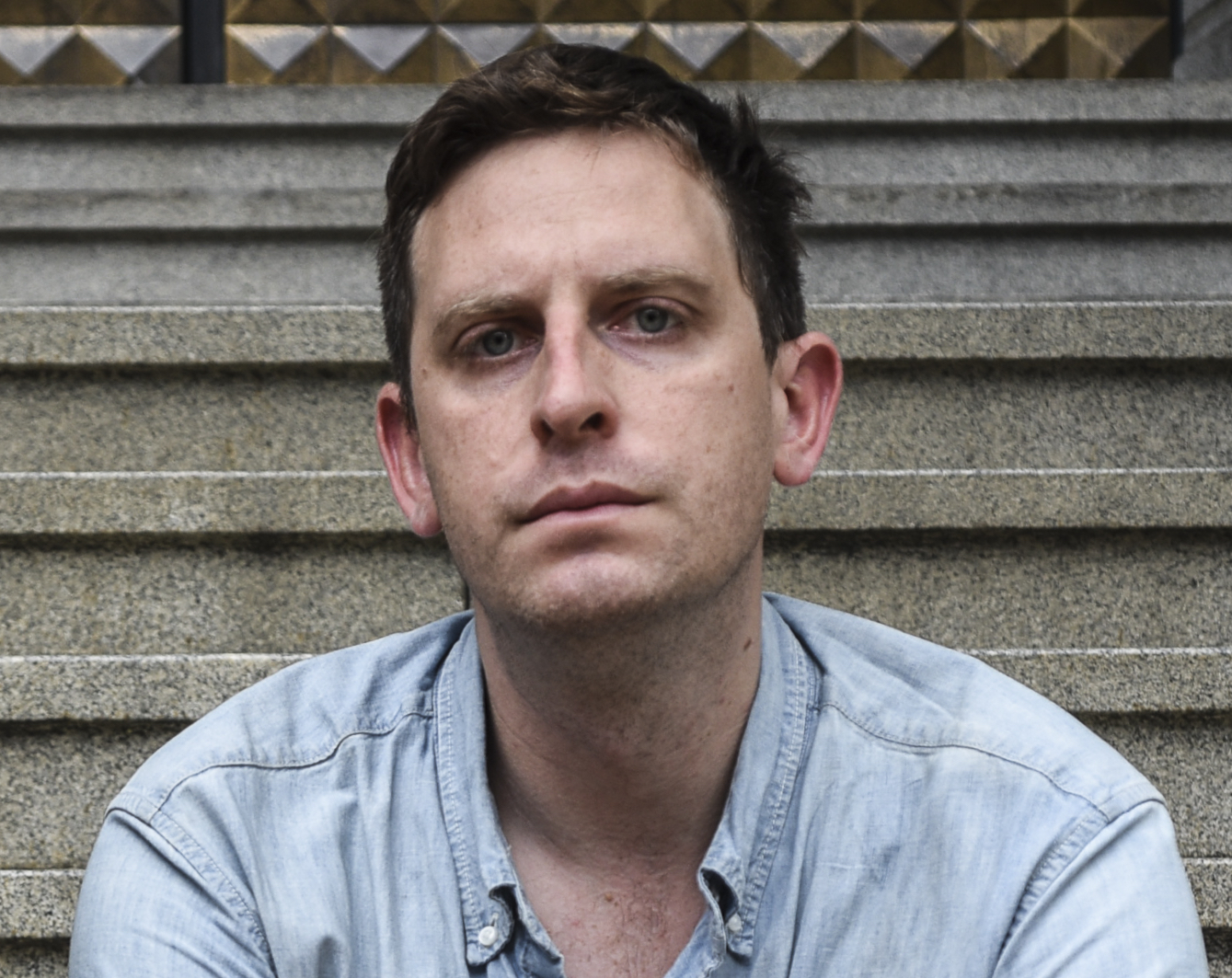
Brandon Soderberg reports on cops, guns, and drugs. He is the co-author of the book, I Got a Monster: The Rise and Fall of America’s Most Corrupt Police Squad, which was made into a documentary this year.
